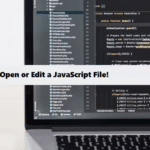In jQuery, if you want to find the closest parent element with a specific class that is not false, you can use the .closest() method. The .closest() method traverses up the DOM tree and returns the first ancestor that matches the specified selector.
Here’s how you can do this:
Example Code
#html
<div class="parent">
<div class="child">
<div class="target">I am the target</div>
</div>
</div>
<div class="parent">
<div class="child">
<div class="target false">I am not the target</div>
</div>
</div>#javascript #jquery
$(document).ready(function() {
// Selecting the element you want to check
$('.target').each(function() {
// Find the closest parent with the class 'parent' that is not 'false'
var closestParent = $(this).closest('.parent:not(.false)');
if (closestParent.length) {
console.log('Closest parent found:', closestParent);
} else {
console.log('No valid parent found');
}
});
});Review:
- HTML Structure: The example contains multiple nested divs. Some of the
.targetelements are within.parentdivs, and one.targethas a classfalse. - jQuery Code:
- The
$(document).ready()function ensures that the DOM is fully loaded before running the script. - The
$('.target').each()method iterates over each element with the class.target. - Inside the loop,
$(this).closest('.parent:not(.false)')finds the closest parent with the class.parent, excluding any parent with the classfalse. - The result is checked: if a valid parent is found, it logs the closest parent; otherwise, it indicates no valid parent was found.
- The
Note:
Using closest() with the appropriate selector allows you to effectively find a parent element that meets specific conditions. This approach is useful in scenarios where you need to exclude certain classes or elements. Let me know if you need further assistance or examples!
Understanding How Coding Filters Help Reduce Complexity!
Coding filters offer a powerful way to reduce complexity by providing a mechanism to focus on relevant data or logic while ignoring unnecessary elements. By applying these filters, developers can avoid convoluted conditional statements, reducing code length and enhancing clarity in their applications.




